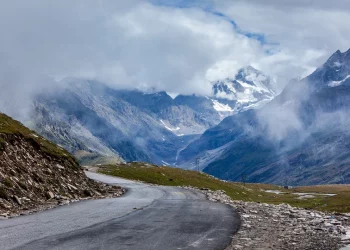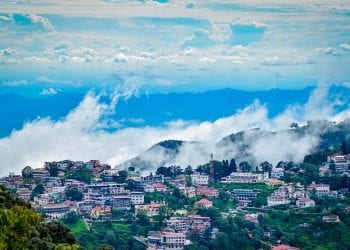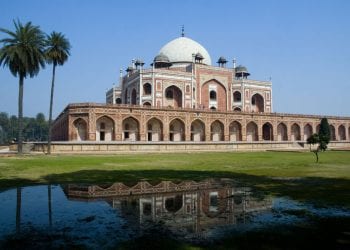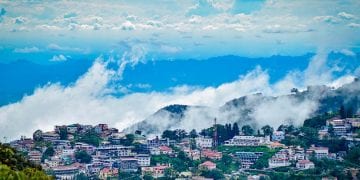These Temples in Pushkar Can Be the Experience of a Lifetime!
Rajasthan is mostly famous as the land of kings, queens, and palaces, but to the observant traveller, it is also a place where a lot of religious sites exist. And that is especially true for the holy town of Pushkar. In a city that is believed to be created by Brahma, the Hindu god of creation itself, it would be surprising to not find religious fervour and religious places. Truly, no traveller in search of beautiful architecture and religious solace will be disappointed with the temples in Pushkar. Temples that are even 2000 years old stand tall here, and you will also find new ones that were built at the beginning of the 20th century. Wherever one goes in Pushkar, they are sure to find colourful history and enchanting stories about the temples.
Top 10 Temples To Visit In Pushkar
- Varaha Temple
- Old Rangji Temple
- Apteshwar Temple
- Raghunath Temple
- Gayatri Temple in Pushkar
- Mahadeva Temple in Pushkar
- Ramavaikunth Temple
- Saraswati Temple
- Savitri Temple
- Brahma Temple
1. Varaha Temple
According to legend, once upon a time, a demon called Hiranyaksha was going about destroying all life on earth and threatened to finish off the planet. Seeing his destruction, Lord Vishnu appeared in the avatar of half a boar-half man and killed the demon. At different times, when the forces of evil were gathering strength, Lord Vishnu would take on an avatar and appear on earth to defeat these evil forces. According to Hindu mythology, he embraced nine such avatars, one of which was Varaha. This temple is dedicated to the Varaha avatar of Vishnu.
The Varaha temple was built in the 12th century by King Anaji Chauhan. Varaha or the boar is believed to be an incarnation of Lord Vishnu. The temple was partly destroyed by the Mughal emperor Aurangzeb but was renovated again in the 18th century by the Raja Sawai Jai Singh II of Jaipur.
The temple has a huge statue of the Lord Varaha in its inner sanctum which is white in colour. Apart from this, there are many intricate carvings and pillars depicting Garuda and life-sized statues of dwarpalikas or sentries guarding the temple doors.
The best time to visit Varaha temple is during winters which are from October to February. You can visit the temple anytime from sunrise to sunset. Once you reach the railway station or airport, you will easily get buses and taxis to Varaha Temple.
2. Old Rangji Temple
One of the most popular religious sites in Pushkar, the Old Rangji temple is a 150-year old temple dedicated to Lord Rangji who is an incarnation of Lord Vishnu. Embodying a fine mix of Mughal and Rajput architecture, the temple also has shades of South Indian architecture with its high-rising Gopuram. Old Rangji Temple is dedicated to Lord Ranga.
The temple was commissioned to be built in the year 1823 by a rich merchant Seth Puran Mal Ganeriwal of Hyderabad. The temple houses the idols of Lord Rangji, idols of Lord Krishna, Goddammahi, Goddess Lakshmi and Shri Ramanujacharya.
Almost all the major festivals on the Hindu religious calendar are celebrated here and they draw huge crowds of devotees from across Rajasthan.
Old Rangji Temple is only one km away from the Pushkar bus station. It will take around 30 minutes to completely explore Old Rangji Temple. This temple remains open from 6 am to 7 pm and it is close to Pushkar Lake.
3. Apteshwar Temple
Apteshwar Temple is one of the religious sites in India, that boast of spellbinding architecture and religious rituals. A temple that endured the ravages of time, this 12th-century structure was destroyed by Aurangzeb but reconstructed again.
The main deity here is the Shiva Lingam that is served with curd, milk, ghee, and honey. Apart from this, devotees also offer ‘bel’ leaves to the Lord, which they believe helps in fulfilling their wishes.
Devotees and tourists from all parts of the world visit this temple to take part in the rituals and admire the architecture. Shivaratri is the main festival here, which is celebrated with great fervour and joy.
The distance between Pushkar Bus Station and Apteshwar Temple is only one km. It is located near the Brahma temple and you can visit this temple from 6.30 am to 8.30 pm. The Apteshwar temple is famous for its architecture, the white marbles and the serene beauty of Shiva make Apteshwar temple a must-visit.
4. Raghunath Temple

Pushkar has two Raghunath temples with the older one being built in 1823 and dedicated to Lord Vishnu. Here, Vishnu is worshipped in the form of Lord Rama who is one of the nine incarnations of Vishnu.
Like other religious sites in the area, this one too has beautiful architecture and has deities of Lord Venugopal, Goddess Lakshmi, and Lord Narsimha.
The newer Raghunath temple has deities of Lord Vaikunthanath and Goddess Lakshmi. This temple has seven other shrines with one shikhara each. Only Indians are allowed to enter this temple.
Raghunath temple remains open from 6 am to 9 PM and the best time to visit this temple will be during winters. During summers, the temperature soars, making it extremely difficult for the visitors to explore the temple wholeheartedly. To completely explore Raghunath temple, it takes somewhere around 1 to 2 hours.
5. Gayatri Temple
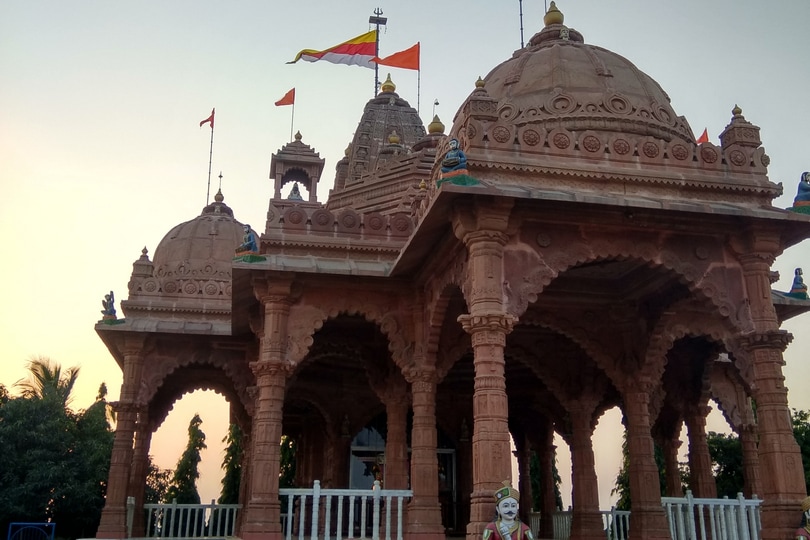
The Gayatri temple is a hill-top temple dedicated to Goddess Gayatri who is said to be the consort of Brahma. Along with Goddess Gayatri, Lord Brahma and Godess Savitri are worshipped in this temple.
According to Hindu mythology, Lord Brahma dispatched a swan with a lotus in its beak to drop at a place where he would perform a yagna. The place where the swan dropped the lotus was Pushkar and thus it is considered a major pilgrimage spot for Hindus.
The prime attraction at this temple is the Rajasthani architecture. Devotees throng the temple to worship and enjoy the scenic views from the hill-top.
You can visit Gayatri temple from 6 am to 9 pm. If you are travelling by train, then the Gayatri temple will be 11 km away. You can easily reach by bus and private taxis.
6. Mahadeva Temple
Another temple dedicated to Lord Shiva, this temple is considered to be one of the finest religious sites here. The temple has a statue of Lord Shiva with five faces that are made out of marble and embellished with beautiful ornaments. The sculptures and carvings around the main shrine depict various Hindu deities.
The courtyard of the temple deserves special mention as elaborately decorated pink pillars grab the attention of devotees and tourists alike. The temple was built in the 19th century. Mahadeva temple is one of the most important temples in Pushkar and it is dedicated to Lord Shiva.
Visit Mahadeva temple during winters to enjoy the sightseeing the most. The temple remains open from 6 am to 8 pm and it is 14 km from the Ajmer railway station.
7. Sri Rama Vaikunth Temple
Lord Rama is one of the nine incarnations of Vishnu. The Rama Vaikunth Temple is one of the temples in Pushkar dedicated to Lord Rama. One of the youngest temples on this list that was built in 1922, it amply displays the art of the era.
This is another temple on a hill-top from where you can enjoy the view of the Pushkar town. Some of the features of this temple that make it stand out are the 361 images of Hindu gods and the distinctively South Indian style of the architecture with its towering spires and gopurams. This temple is one of the biggest temples in Pushkar. The expert craftsmanship work is commendable.
If you want to visit Rama Vaikunth Temple, then visit during the winters to avoid the scorching heat. The temple remains open from 6 am to 9 pm. It is 11 km away from the Ajmer railway station.
8. Saraswati Temple
Saraswati Temple is one of the well-regarded religious sites in Pushkar. It is dedicated to Devi Saraswati who is another wife of Brahma. Saraswati is the goddess of knowledge and art. The temple offers a very tranquil environment which is loved by the visitors and pilgrims to the temple. Everyone and almost anyone associated with professions related to art and knowledge definitely pays a visit to the temple.
Goddess Saraswati is considered to be the deity of science, arts, skills, and crafts. The Saraswati Temple celebrates Saraswati Pooja every year and people from all across the city visit this temple to offer their prayers.
Visit Saraswati temple in Pushkar from October to March. This temple remains open from 6 am to 9 pm.
9. Savitri Temple
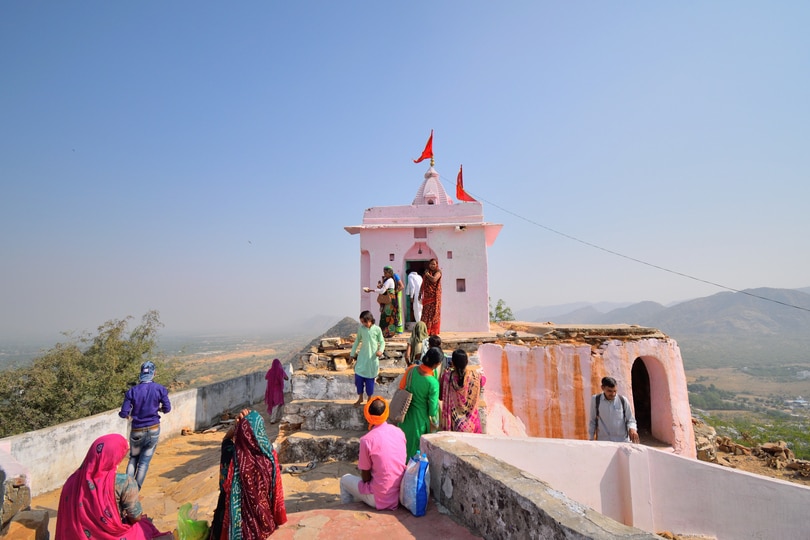
The Savitri Temple is another one of the notable and striking religious sites in Pushkar.
According to Hindu mythology, Savitri Devi was the wife of Brahma and she was supposed to reach a yagna which Brahma was performing but she couldn’t reach on time. In order to perform the yagna on time, Brahma married a local girl called Gayatri who then became the second wife of Brahma. All this made Goddess Savitri very angry.
In order to please her, the shrine of Savitri Devi was built. Even today, the evening Arti is first performed in Savitri Temple and then in Gayatri Temple. The deities of both the goddesses are kept in the Savitri Temple.
This hill-top shrine is also thronged by devotees during all the major Hindu festivals across the year.
10. Brahma Temple
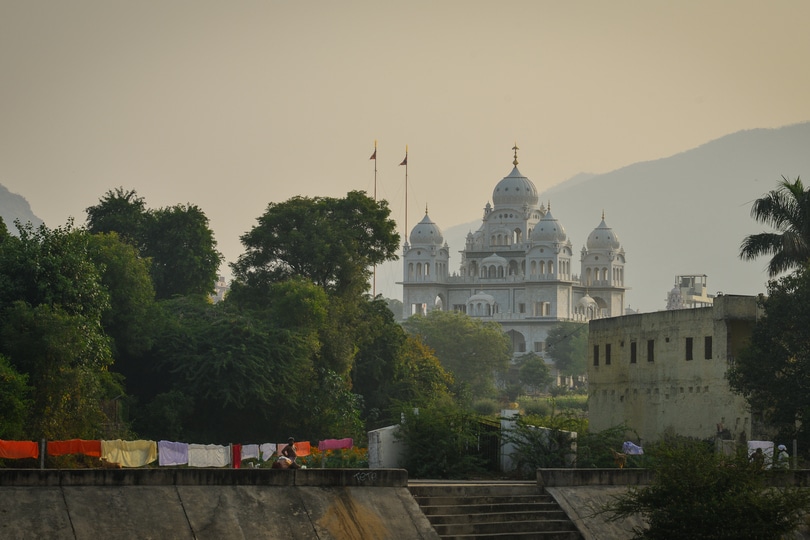
The Brahma Temple is one of the temples in Pushkar that needs no introduction across India. It is the only temple in the world that is dedicated to Lord Brahma. The red spire and the image of the swan (considered sacred to Lord Brahma) are the identifying marks for this temple. The inner sanctum of the temple has the Chaturmukhi (four-faced) idol of Lord Brahma. Apart from this, a marble statue of the Sun God stands guard at the doors of the temple. It is said that the Brahma temple in Pushkar is about 2000 years old.
If you want to visit Brahma temple, then the best time is the Ratri Shayan Arati. This temple remains open from 6.30 am to 8.30 pm. Brahma temple is only 10 km away from the Ajmer city and you will easily find buses, taxis, and trains to commute. Brahma temple conducts three aratis on a daily basis, first is the Sandhya arati which happens during the evening around 40 minutes past the sunset, second is the Ratri Shayan Arati which happens after 5 hours of sunset, and in the morning, the Mangalaarati is held.
Conclusion
These religious sites in Pushkar reflect a glorious and colourful past of Rajasthan and give the land its diverse and multifaceted nature. Hopefully, the information provided will help you to cover all the beautiful temples in Pushkar. Summers are not the best time to visit Pushkar as temperatures will be pretty high. Ideally, winters are the best time to enjoy sightseeing in this charming town. Popular festivals of Rajasthan such as Pushkar camel fair or the Pushkar Fair which is held usually in the months of October and November is a globally famous event and can be a good time to visit the place.
Recent Posts
Top Picks
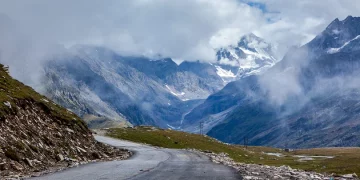
- OYO
 15 April, 2024
15 April, 2024 - Cultural Tour

- OYO
 15 April, 2024
15 April, 2024 - Cultural Tour

- OYO
 15 April, 2024
15 April, 2024 - Cultural Tour

- OYO
 15 April, 2024
15 April, 2024 - Cultural Tour

- OYO
 15 April, 2024
15 April, 2024 - Cultural Tour

Please rotate your device
Please go back to portrait mode for the best experience




 April 15, 2024
April 15, 2024 